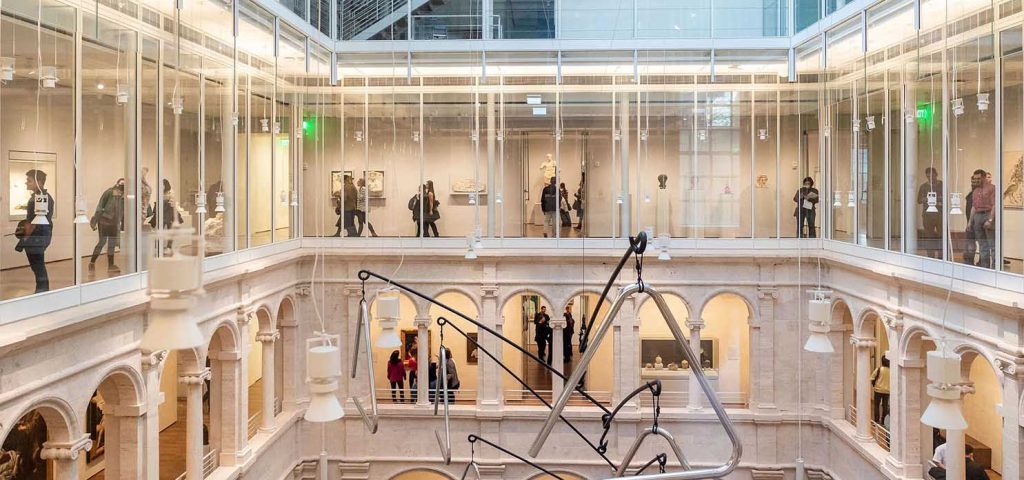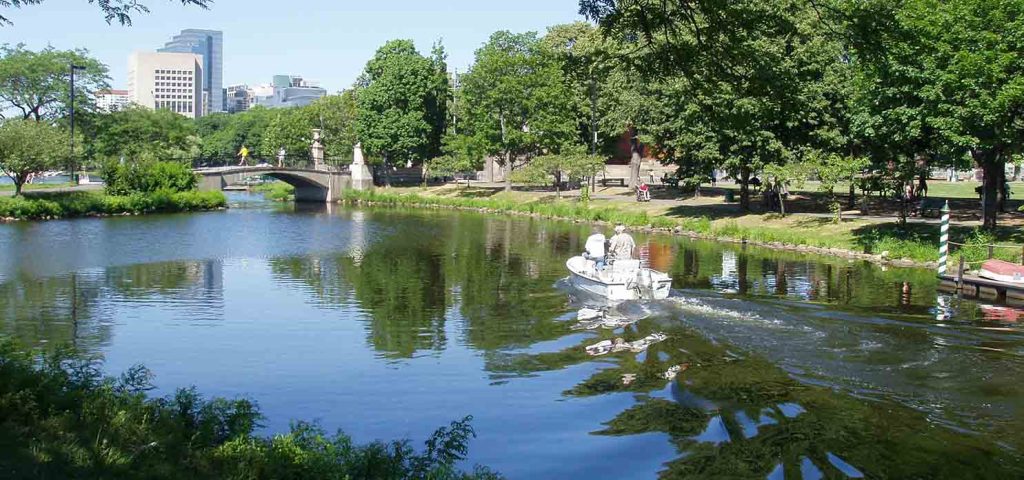When you think of Boston, what comes to mind? Is it the cobblestone Freedom Trail, or the quiet library of Harvard University? Perhaps it’s the delicious Boston lobster or the electrifying atmosphere of Fenway Park? This city, like a perfectly mixed cocktail, seamlessly blends the weight of colonial history with the energy of a modern metropolis. Whether you’re a history lover, architecture enthusiast, foodie, or an urban wanderer, Boston has something to offer for every traveler.I’ll guide you through the charming old neighborhoods of Boston, explore the cutting-edge cultural landmarks, and leave your footprints in the city’s most soulful corners.
I. Echoes of the Old City: Freedom Trail and Colonial Neighborhoods
1.1 Freedom Trail: The Birth of the United States
Boston’s Freedom Trail is more than just a walk through the city; it’s a journey through the heart of American history. The 2.5-mile red-brick path connects 16 significant landmarks that span the story of the American Revolution and the birth of the nation. Starting at Boston Common, the oldest public park in the U.S., and ending at the Bunker Hill Monument, this trail offers a vivid glimpse into the past, immersing you in stories of liberty, resistance, and independence.
Key sites include:
- Massachusetts State House: Situated atop Beacon Hill, the State House’s golden dome is one of Boston’s most iconic structures. Designed by Charles Bulfinch, this building houses the Massachusetts legislature and stands as a symbol of the state’s political history. The view from the State House also provides a great vantage point of the surrounding city.
- Old North Church: The site where Paul Revere famously signaled the onset of the British invasion with the lanterns, “One if by land, two if by sea.” This historic church, built in 1723, has an impressive Georgian architecture and remains one of the oldest churches in the city. The bell tower offers an intriguing perspective on the neighborhood and is a must-see for history enthusiasts.
- Paul Revere House: The home of one of the most famous figures of the American Revolution, Paul Revere’s house is a rare surviving example of colonial architecture. It offers insight into Revere’s life and work as a silversmith and patriot. Visitors can see artifacts and exhibits that detail his midnight ride and role in the revolution.
- Faneuil Hall: Originally a marketplace, this historic building is often called “the Cradle of American Liberty.” It was the site of numerous speeches encouraging American independence. Today, it serves as a marketplace once again, but with shops and eateries that capture both the past and present energy of the city. It’s a lively place where the city’s colonial roots and its modern cultural vibrancy meet.
Tip: If you want to fully immerse yourself in the experience, consider taking a guided tour to hear personal anecdotes and fascinating details about each stop. Boston’s Freedom Trail is best enjoyed at a leisurely pace, so be sure to allow for rest stops at local cafés or green spaces along the way.
1.2 North End: A Taste of Italy in Boston
Along the Freedom Trail, you’ll pass through Boston’s North End, one of the earliest settlements of Italian immigrants. Today, this district retains a strong Mediterranean influence, with narrow alleys, old brick houses, and the delightful scent of pizza and pastries filling the air.
What to experience:
- Giacomo’s Ristorante: Known for its long lines, Giacomo’s offers some of the best Italian food in the city. Located on the bustling Hanover Street, it is a favorite spot for locals and tourists alike. The seafood pasta is a standout, with fresh ingredients and perfectly balanced flavors that showcase the Italian love for simplicity and quality.
- Mike’s Pastry & Modern Pastry: These two pastry shops are legendary in Boston, and it’s hard to decide which one reigns supreme. Mike’s Pastry is famous for its Cannoli, a must-try dessert that’s perfectly crispy on the outside and filled with a sweet, creamy ricotta filling. Modern Pastry, on the other hand, offers a more refined version of the same delicacy, along with other Italian treats like tiramisu and biscotti. No matter which you choose, a stop at one of these bakeries is a quintessential part of any North End visit.
- St. Leonard’s Church: This church is a spiritual haven amidst the lively streets of the North End. It offers a moment of peace and reflection in the heart of the bustling neighborhood. The church is not just a place of worship; it is also a community gathering point, with a rich history dating back to the 19th century. The Italian influence can be seen in its beautiful frescoes and statues, reflecting the deep Catholic traditions of the area.
II. Harvard and MIT: Where Academic Tradition Meets Innovation

2.1 Harvard University: A Cultural Magnet
Located across the Charles River in Cambridge, Harvard University is not only a world-renowned academic institution but also a cultural museum in its own right. With its red brick walls, ivy-covered buildings, and solemn libraries, every corner of Harvard exudes respect for knowledge and thought.
Must-see spots:
- Harvard Yard: The most iconic part of the campus.
- Widener Library: One of the largest and most prestigious libraries in the world.
- Harvard Art Museums: A collection that spans from classical to contemporary art.
- John Harvard Statue: A popular photo spot and part of the “three lies of Harvard.”
Travel Tip: Join a student-led tour (free or by donation) for an in-depth look into Harvard’s history and legends.
2.2 Massachusetts Institute of Technology (MIT): Pioneers of Technology and the Future
MIT is renowned for its technological innovations, and its campus is a stark contrast to Harvard’s more traditional style, with a modern and experimental architectural vibe. If you’re an architecture lover or tech enthusiast, MIT is a must-see.
Highlights:
- Stata Center: Designed by Frank Gehry, this building has a unique, origami-like design.
- MIT Museum: Showcasing cutting-edge technologies such as robots, artificial intelligence, and lasers.
- Infinite Corridor: MIT’s famous long hallway connecting various research buildings.
III. New Boston: Art, Shopping, and Trendy Landmarks
3.1 Seaport District: From Industrial Port to Chic New Hub
Once a quiet industrial port, Boston’s Seaport District has transformed into the city’s most trendy and stylish neighborhood. Glass skyscrapers, chic restaurants, and creative art galleries come together to form a modern urban oasis.
What to check out:
- Institute of Contemporary Art (ICA): A waterfront museum showcasing avant-garde exhibits.
- Seaport Common: A green space where outdoor movies, art markets, and fitness events are held in the summer.
- Envoy Hotel Rooftop Bar: Offering stunning views of the Charles River and city skyline.
- Lookout Rooftop & Bar: Perfect for watching the sunset with a drink, and even better at night with the illuminated cityscape.
3.2 Fenway Cultural District: A Blend of Art and Baseball
Fenway is not only home to the Boston Red Sox but also serves as the cultural heart of the city, housing major cultural institutions.
Key attractions:
- Fenway Park: The oldest baseball stadium in the U.S., a must-visit for baseball fans.
- Museum of Fine Arts: One of the largest and most comprehensive art museums in the world.
- Isabella Stewart Gardner Museum: A Venetian-style palace with a beautiful collection of art and floral arrangements.
IV. Green Spaces: Parks and Walkable Areas
4.1 Boston Common and Public Garden: Green Oases in the City
- Boston Common: America’s oldest public park, offering different seasonal views year-round.
- Public Garden: Famous for its swan boats, this is a picturesque place to stroll.
- Swan Boats: A favorite among locals and tourists, these human-powered boats are available in spring and summer.
4.2 Charles River Esplanade: A Riverside Escape
- A perfect spot for running, cycling, or picnicking, the Esplanade connects Cambridge and downtown Boston.
- In the evening, street performers, joggers, and dog walkers create a lively atmosphere that embodies the spirit of Boston.

V. Boston Travel Tips and Suggested Itinerary
5.1 Getting Around
- Walking: Boston is a very walkable city with well-maintained sidewalks and a dense concentration of attractions.
- T Subway: The MBTA subway system, also known as the “T,” has four main lines covering most major attractions. A single ride costs about $2.40.
- Harvard to Downtown Bus: Direct Red Line connection takes about 15 minutes.
- Ferry: Take a water shuttle from the Seaport District to Charlestown.
5.2 Suggested Itinerary
- Day 1: Freedom Trail + Quincy Market + North End dinner.
- Day 2: Harvard University + MIT + Charles River Esplanade.
- Day 3: Seaport Art Walk + Fenway Park + Museum Night.
Boston is more than just a snapshot of America’s history. It is a city that constantly evolves. The past and present, the calm and the energetic, the intellectual and the artistic — these aren’t opposing forces but rather harmonious parts of Boston’s identity. You can walk along cobblestone streets and feel the colonial fervor of three centuries ago, while also experiencing the technological pulse of tomorrow amidst sleek glass skyscrapers. So, pack your bags and let Boston’s rhythm guide you through its rich historical and vibrant contemporary landscape. A trip through Boston, where you won’t get lost, is bound to be the most exciting journey.
